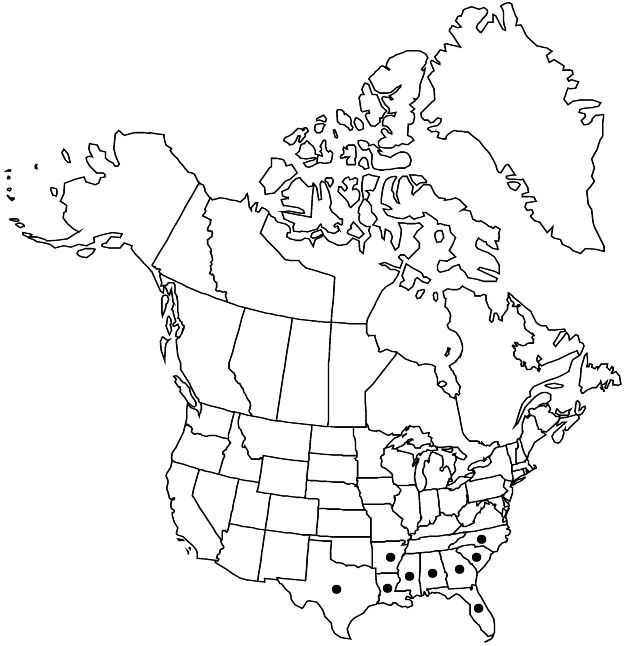Prunus caroliniana
Hort. Kew. 2: 163. 1789.
Shrubs or trees, not suckering, 40–120 dm, not thorny. Twigs with terminal end buds, glabrous. Leaves persistent; petiole 5–8 mm, glabrous, eglandular; blade narrowly elliptic to elliptic or oblanceolate, 5–10 × 1.5–4 cm, base cuneate to obtuse, margins entire or spinose-serrate, sometimes undulate, teeth sharp, eglandular, apex usually acute to short-acuminate, sometimes obtuse-apiculate, apicula acute, surfaces glabrous, abaxial glandular, glands 2, proximal, flat, circular to oval. Inflorescences 12–30-flowered, racemes; central axes 13–30 (–43) mm, leafless at bases. Pedicels 1–4 mm, glabrous. Flowers usually bisexual, proximal sometimes staminate, blooming before leaf emergence; hypanthium cupulate, 2.5–3 mm, glabrous externally; sepals spreading, semicircular, 0.5–1 mm, margins usually entire, sometimes glandular-toothed, surfaces glabrous; petals white, suborbiculate to elliptic, 1–1.5 mm; ovaries glabrous. Drupes black, ovoid, 9–12 mm, glabrous; mesocarps leathery; stones ovoid, not flattened, usually splitting open. 2n = 32.
Phenology: Flowering Feb–Apr; fruiting May–Nov.
Habitat: Stream bottoms, thickets, wooded uplands, maritime forests, naturalizing in urban woodlands
Elevation: 0–200 m
Distribution

Ala., Ark., Fla., Ga., La., Miss., N.C., S.C., Tex.
Discussion
Prunus caroliniana is a popular ornamental for screens and trimmed hedges and is widely planted in the southeastern United States because of its lustrous, dark green foliage persistent through the seasons. The species was probably common as a native plant on the southeastern barrier islands; most inland occurrences represent escapes from cultivation. It rarely escapes from cultivation in California.
Selected References
None.